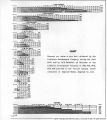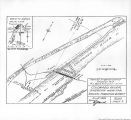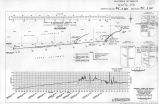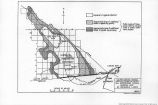| OCR Text |
Show 12 THE ALL-AMERICAN CANAL. ing all the shares of stock in a Mexican company, which is the agency through which the district conducts all necessary operations in Mexico. The area of the district is about 586,000 acres. Irrigation has already been extended within the district to 392,000 acres (this was the area served with water in 1918). No cultivation is possible without irrigation. Hie mean annual rainfall in Imperial Valley is less than 3 inches. Some idea of the extent of development in the Imperial Valley will be obtainable from the following facts and figures: Within the district are the towns of Calexico (4,500 inhabitants); El Centro (7,500 inhabitants); Imperial (2,500 inhabitants); Holtville (2,500 inhabitants); Brawley (4,800 inhabitants); besides other towns and places such as Calipatria, Niland, Seeley, Heber, and Dixieland. The total population of the California portion of Imperial Valley is estimated at 55,000. This does not include the population of Coa-chella Valley. The Southern Pacific Railroad enters the Coachella Valley at the north and, dipping down into the Salton Basin to near the present level of the Salton Sea, leaves the basin to the southeastward of Niland, from which place it sends a branch line into the heart of Imperial Valley. The Inter-California Railroad takes a course southerly from Calexico into Lower California and, swinging thence to the eastward, northeastward, and northward, reenters California at Andrade on the west bank of Colorado River. The San Diego & Arizona Railroad, from San Diego across the mountains into the Imperial Valley at El Centro, is nearing completion. The annual value of farm products of the Imperial Valley alone reached Slo.000,000 in 1916 and over $30,000,000 in 1918. South of the boundary, in Lower California, the lands of the irrigated region are owned in large tracts. There has been little or no colonization. Cultivation is mainly by renters. The principal products are cotton and cattle. Alfalfa is grown to a considerable extent. The improved area is part of the region to the west and northward of the present channel of Colorado River extending to the high ground at the eastern base of the Cocopah Mountains. In this portion of the delta alone there are upward of 200,000 acres which can be watered from the Imperial Canal system, and there have already been brought under cultivation more than 100,000 acres (in 1918). The irrigated area in lower California was probably less than 10,000 acres in 1909. It was about 76,000 acres in 1917. It is rapidly increasing. At the present extent of irrigation the entire flow of lower Colorado River is at times required by the irrigator and diverted. Thus, for example, in the fall of 1915 and for a period of about 10 days in September, 1918, the only water in the Colorado River below the Imperial Canal -heading was the leakage through the brush or rock |
| Source |
Original book: [State of Arizona, complainant v. State of California, Palo Verde Irrigation District, Coachella Valley County Water District, Metropolitan Water District of Southern California, City of Los Angeles, California, City of San Diego, California, and County of San Diego, California, defendants, United States of America, State of Nevada, State of New Mexico, State of Utah, interveners] : California exhibits. |




































































































































































































































































































































































































